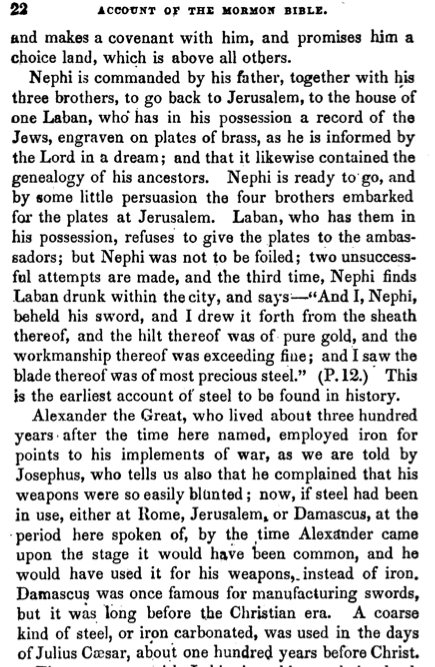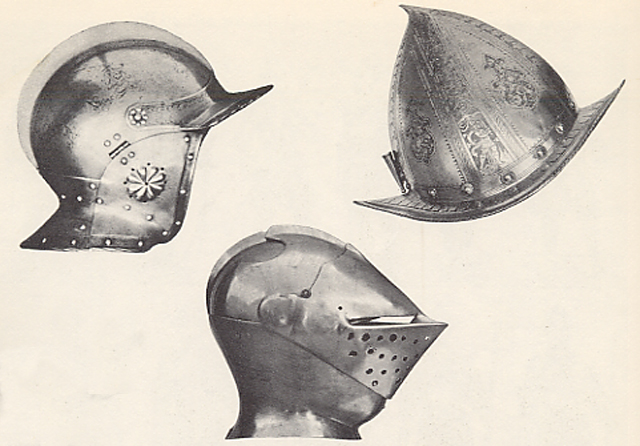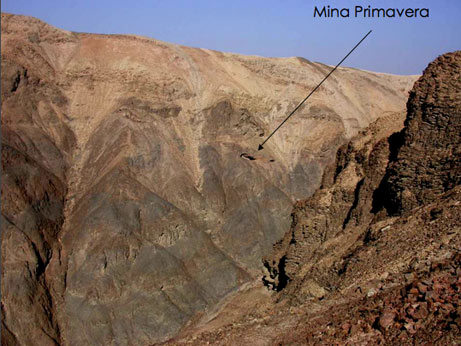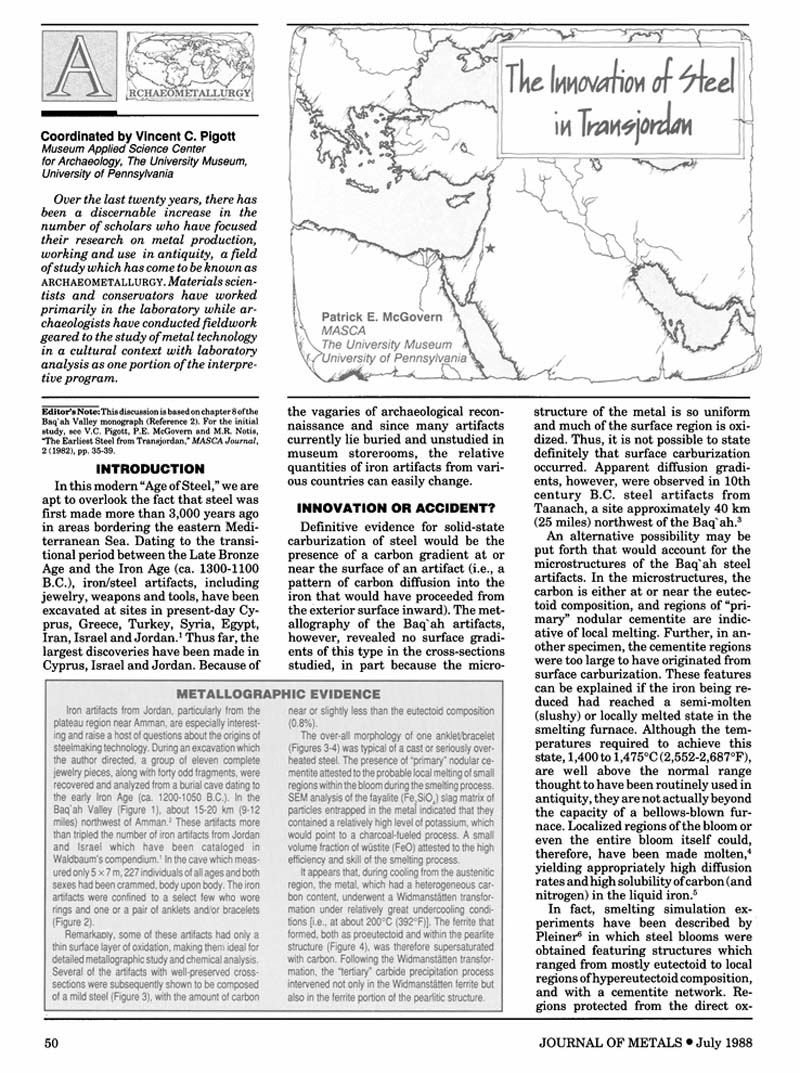Steel utilized as recorded in the Book of Mormon
The Book of Mormon record records that there where steel swords in the Eastern Hemisphere in the year 600 BC and in the Western Hemisphere in the Book of Mormon times.
----------------------
"...his sword...the blade thereof was of the most precious steel." (1 Nephi 4:9) Jerusalem, About 600 BC
"And...I did break my bow, which was made of fine steel...." (1 Nephi 16:18) Arabian Peninsula, About 600 BC
"And I did teach my people...to work in all manner of iron and...of steel...." (2 Nephi 5:15) Western Hemisphere 588-570 BC
[Note: Nephi knew the difference between "iron" and "steel".]
"And...became exceedingly rich in...fine workmanship of...steel...." (Jarom 1:8) Western Hemisphere 399 BC
"...he did molten out of the hill, and made swords out of steel...." (Ether 7:9) Western Hemisphere pre-600 BC
----------------------
In 1830 A.D. when the Book of Mormon was first published, it was general thinking of the world was that pre-Columbus people in the western Hemisphere and in the early Near East people did not know how to make steel.
 <<Mormonism: Embracing the Origin, Rise and Progress of the Sect, by James Hunt, 1844, p. 22
<<Mormonism: Embracing the Origin, Rise and Progress of the Sect, by James Hunt, 1844, p. 22
In the 1800’s it was believed and taught that steel was not known in the Near East in Nephi's day, 600 BC
It was also believed and taught that neither iron nor steel was known or used in the ancient Western Hemisphere at any time.
In light of scientific and historical research done over recent decades these pasts believe have been proven false.
Evidence now supports the fact that these ancient people did have and use “steel” as recorded in the Book of Mormon.
----------------------
Archaeologist uncovered a steel sword that was found near new city of Jericho during the 1980s that dates back to the 7th century B.C." The sword which had a bronze handle, was one meter long and dates to the time of king Josiah, who would have been a contemporary of Lehi. This find has been described as “spectacular” since it is apparently “the only complete sword of its size and type from this period yet discovered in Israel.”
Today, (2014) the sword is displayed at Jerusalem's Israel Museum -- Displayed: "September 1, 1993-January 31, 1994, Location: Iron Age Gallery, Media: Iron sword, Rare Iron Sword: Late First Temple Period (7th century BCE). Found in the Jericho Valley on the floor of a building, near the skeleton of a man."
<< Journal of Metals, July 1988
"...steel was first made more than 3,000 years ago in the areas bordering the eastern Mediterranean Sea."
----------------------
A "meter-long" "carburized iron" [Steel], Sword "was unearthed just south of the city of Jerico and dated back to the late seventh century BC..." (Iron Sword from the Time of Jeremiah Discovered near Jericho, Ensign June 1987)
Out of the Dust: Steel in Early Metallurgy, (John L. Sorenson, Neal A. Maxwell Institute, Vol. 15,#2 2006) (PDF file)
----------------------
Pre-Aztec Western Hemisphere Book of Mormon people used steel as recorded in the Book of Mormon.
In the area of Mesoamerica steel and/or iron depending upon soil conditions and the amount of moisture would rust away quite rapidly. I know of no “steel” swords that have been found, so far as of 2017, in Mesoamerica that dates to the Book of Mormon time period.
But an interesting event took place when the Aztecs first greeted Hernandez Cortez and the Spanish Conquistadors. When they landed on the east coast of Mexico in 1419 AD The one thing that caught their attention perhaps more than anything else was the Spanish steel helmets.
An Aztec chieftain noticed that "...the [Spanish] soldiers had a [steel] helmet like the one that they possessed which had been left to them by their Ancestors…."
The Aztecs did not work with steel but they had found a helmet left over from a race of ancient people who did work with iron and steel. These ancient people were living in Mesoamerica in a much earlier time period. These ancient Nephite Book of Mormon people were the early ancestors of the Aztecs.
 << 1519 A.D. Steel Spanish Conquistador's Helmets
<< 1519 A.D. Steel Spanish Conquistador's Helmets
"...the [Spanish] soldiers had a [steel] helmet like the one that they, [the Aztecs], possessed which had been left to them by their Ancestors…." (Bernal Castillo, The Discovery & Conquest of Mexico, p. 141, this information is sometimes found on p.72, depending on who published the book.)
----------------------
"The helmet most commonly associated with the conquistadors was the morion, a heavy steel helm with a pronounced crest or comb on top and sweeping sides that came to points on either end. Some infantrymen preferred a salade, a full-faced helmet that looks a little like a steel ski mask. In its most basic form, it is a bullet-shaped helm with a large T in front for the eyes, nose and mouth. A cabasset helmet was much simpler: it is a large steel cap that covers the head from the ears up: stylish ones would have an elongated dome like the pointy end of an almond." (Armor and Weapons of the Spanish Conquistadors, About.com)
---------------------- << Ancient Iron Ore Mine Discovered in the Peruvian Andes.
<< Ancient Iron Ore Mine Discovered in the Peruvian Andes.
“A 2,000-year-old mine has been discovered high in mountains in Peru. The find offers proof that an ancient people in the Andes mined hematite iron ore centuries before the Inca Empire. The mine predates the arrival of Spanish conquistadors. It demonstrates that iron ores were important to ancient Andean civilizations." [And the iron mine] was used…from about 100 B.C. to around A.D. 600. Its shaft is a hand-dug cave covering an area of some 700 cubic meters (24,720 cubic feet). The mine produced some 3,710 metric tons (8,179,066 pounds) of ore over about 1,400 years of use, according to the researchers. The site also rendered artifacts—such as beads, corncobs, stone tools, pottery shards, and textiles—that have allowed Vaughn's team link the mine to the Nasca. Most of the artifacts date to the first few centuries A.D.” (National Geographic, Feb. 2008)
----------------------
“And they did work in all manner of… iron… And they [the Jaredites], did work all manner of fine work.” (Ether 10:23)
“…objects found at the [Olmec] sites include mirrors of polished iron ore…” (2006 World Book Multimedia Encyclopedia)
----------------------
Additional Information:
Hematite Mining in the Ancient Americas: (Mina Primavera, A 2,000-Year-Old Peruvian Mine, by Kevin J. Vaughn, Moises Linares Grados, Jelmer W. Eerkens, and Matthew J. Edwards.)
Steel in the Book of Mormon by William Hamblint
Note: One correcting and/or additional information to this article. The 1828 Webster Dictionary defines “steel” as follows:
STEEL, noun
1. Iron combined with a small portion of carbon; iron refined and hardened, used in making instruments, and particularly useful as the material of edged tools. It is called in chemistry, carburet of iron...
2. Figuratively, weapons; particularly, offensive weapons, swords, spears and the like....
3. Medicines composed of steel as steel fillings. ...steel strengthens the solids.
4. Extreme hardness; as heads or hearts of steel. STEEL, adjective Made of steel; as a steel plate or buckle.. STEEL, verb transitive
1. To overlay, point or edge with steel; as, to steel the point of a sword; to steel a razor; to steel an ax.
2. To make hard or extremely hard. ...
3. To make hard; (Steel, Webster's Dictionary 1828)
